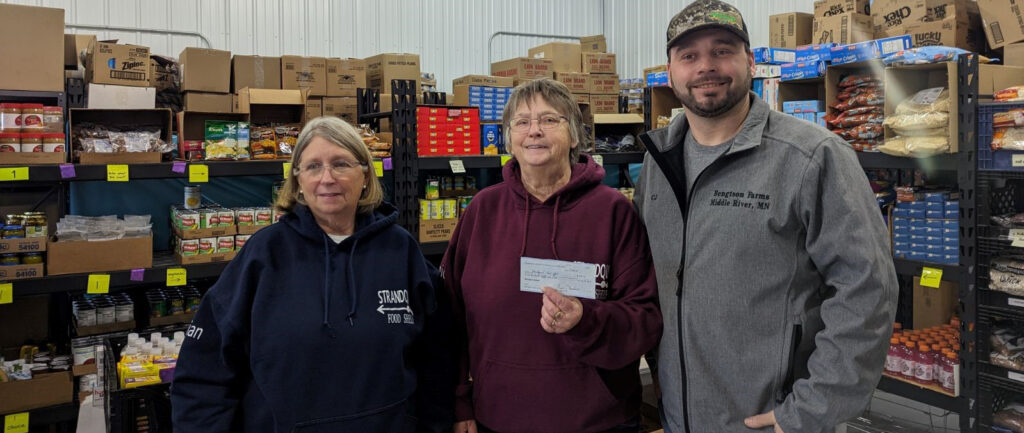This story first appeared in the July-August 2016 issue of Soybean Business, the magazine of the Minnesota Soybean Growers Association. Click here to read more articles from Soybean Business
Communicating with landowners of growing importance
What started out as a simple project three years ago morphed into a multi-pronged communication effort for Wheaton, Minn, farmers Rodd and Jamie Beyer.
In 2013, Jamie Beyer, a former Wheaton city clerk, college recruiter and graphic designer began assembling a newsletter to regularly share what was happening on the farm with their landlords. It wasn’t long, however, before her mailing list grew to include landlord’s family members, their own extended family and even their employees. Th e mailing list has grown to 30 people.
“We felt it was a way to communicate what we do and who we are,” she says. “It was a way to personalize the business and give a face to our operation.”
Jamie began by mailing the newsletter, but in this digital age, she also shares with some recipients via email. She has taken to Instagram and Snapchat to communicate with the younger generation, while Rodd regularly posts on Facebook.
Regardless of the method, the Beyers are being intentional about their efforts to communicate.
“Our original intent was to connect with landowners and those who will be inheriting the land that we rent. Most of them are a generation removed from the farm,” Jamie says. “My husband and I felt that the more those future landowners understood what we were doing, the better chance we have of retaining the land.”
Jamie says some of their landlords are connected to farming, but others are largely spectators. She says one of their landowners works in downtown Chicago, so negotiating rent can be complicated. Th e newsletter helps him better understand what’s happening in rural Minnesota.
Connecting With Landowners
The Beyer’s circumstances are hardly unique. A 2015 report from the USDA National Agriculture Statistics Service (USDA-NASS), showed that 11.6 million acres of Minnesota farmland was rented out by landlords. Results from the Tenure, Ownership and Transition of Agricultural Land survey revealed there were over 83,000 farmland landlords in the state. More than 69,000 of them were non-farming landlords.
Because many landlords are becoming further removed from farming themselves, experts say it’s becoming increasingly important for renters to keep landowners informed.
“It’s a very good idea to keep the lines of communications open with landowners,” says Chuck Wingert of Wingert Realty and Land Services in Mankato. “Many current landowners inherited land from family members and all they have seen is rental rates going up and up. They’ve never seen them going down.”
Wingert says he frequently reminds those landowners that like the stock market, cash rent prices do fluctuate . But because many non-farming owners have only seen good times, their expectations may need to be adjusted.
“So many landlords don’t understand where the economics have gone. Farmers need to have something to educate them,” Wingert says.
A Clearer Picture
While many farmers are reluctant to share a lot of detailed business information with landowners, data like yield maps, base reallocations and price trends can be useful in helping to set or adjust rental rates.
They can also be tools to demonstrate how land improvements such as adding tile drainage or erosion control features could benefit the land and increase the property value.
Wingert says being proactive in communicating with landowners is important and can open doors.
Jamie Beyer agrees.
“This gives us an opportunity to show some of the decisions we have to make and helps convey the risks that we take,” she says. “Because of this, our landowners have a better understanding of what we do.”
Jamie admits the newsletter takes a fair amount of effort and adds to her workload, but it’s become a necessary part of the operation. She says Rodd frequently takes pictures of what’s happening on the farm anyway, so the outreach is a good way to show crop progress, detail weather events and give landowners a flavor of what’s happening on the farm. It also provides a year-by-year record of each growing season.







